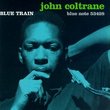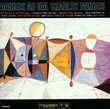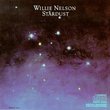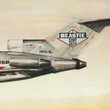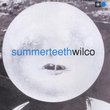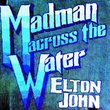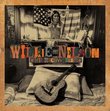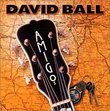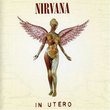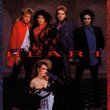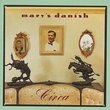| All Artists: John Coltrane Title: Giant Steps Members Wishing: 0 Total Copies: 0 Label: Rhino/Wea UK Release Date: 1/13/2008 Album Type: Import Genres: Jazz, Pop Style: Bebop Number of Discs: 1 SwapaCD Credits: 1 UPC: 081227361020 |
Search - John Coltrane :: Giant Steps
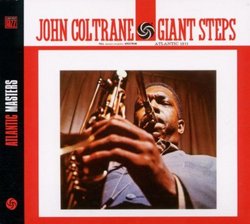 | John Coltrane Giant Steps Genres: Jazz, Pop Limited Edition Japanese pressing of this album comes house in a miniature LP sleeve. 2006. |
Larger Image |
CD DetailsSynopsis
Album Description Limited Edition Japanese pressing of this album comes house in a miniature LP sleeve. 2006. Similar CDs
Similarly Requested CDs
|
CD ReviewsA musician's album--one of the two most indispensable Samuel Chell | Kenosha,, WI United States | 02/12/2010 (5 out of 5 stars) "It's understandable that the wider public prefers to "Giant Steps" the Coltrane of "Blue Trane," "My Favorite Things" (which established crossover cult status for Coltrane in the '60s), "A Love Supreme," the Ballads albums (with and without Johnny Hartman's vocals), perhaps the largely iconic album with the maestro, Duke Ellington, and finally the many dates with Miles, including, of course, "Kind of Blue"). But a musician or close follower of the "language" of jazz improvisation from Louis through Hawk and Lester to Bird and Diz to Coltrane has got to be most impressed by "Giant Steps," especially the title song. Coltrane simply raised the bar to a completely different level, introducing the major, most seminal, development in the expressive process of jazz improvisation since the complex melodic lines of Bird and Diz. For an improvising musician to make the changes not in 5ths (ii-V-1), the basis of 99% of popular music (and classical sonata form), but in ascending 3rds, and moreover to improvise meaningfully on this foundation rendered unstable because of the rapid tempo in tandem with the frequency of the unaccustomed chord changes was a feat of Olympian proportions (listen to Tommy Flanagan, one of the very best, struggling during his piano solo). Coltrane was attracted to the popular music of Richard Rodgers, who had an interest in scales and occasionally in harmony similar to Coltrane's. The bridge to Rodgers and Hart's "Have You Met Miss Jones," for example, moves harmonically in a fashion very similar to "Giant Steps" and "Countdown." And scales are always the basis of Rodgers' melodies (very unlike a "motivic" composer such as Gershwin). Not just in "Do-Re-Mi" and "My Favorite Things" but tunes like "My Romance," "Spring Is Here" and "My Funny Valentine" Rodgers simply dazzles with the immortal melodies that can come from mere scales. Another album by Coltrane that deserves every musician's close attention is "Live at Birdland." The unaccompanied cadenza that Coltrane plays at the end of "I Want to Talk About You" (composed and performed by Billy Eckstine in the '40s) simply has to be heard to be believed. (Compare it to Louis' "West End Blues" or his unaccompanied solo on "Laughin' Louis" or to Hawk's "Body and Soul" or to Bird's 4-bar break on "Night in Tunisia" (the Carnegie Hall concert version). But as far as a second "indispensable" album, for different reasons, I would have to pick, out of the thousands of jazz albums I've listened to, Bill Evans at the Village Vanguard, which is not to say that either session is not without its imperfections. (During Bill's session, the electricity went out, stopping the tape recorder while the music continued. And had Coltrane learned the lyrics to Cole Porter's "Every Time We Say Goodbye," it's unlikely he would have lost the melody each time around on the last 8 bars. Tommy Flanagan was hardly about to correct him after the humbling experience of struggling through Coltrane's unprecedented title song.) Because of the singular importance of this album, the current edition, with the "out-takes," is the one to own (even as an additional album to your current collection of "Giant Steps" editions)." Classic Bill Your 'Free Form FM Handi Cyber | Mahwah, NJ USA | 10/17/2009 (5 out of 5 stars) "It made sense for John Coltrane to record Giant Stpes in 1960. After spending years recording standards and hard bop, Coltrane was finally able to write music that matched his technical abilities.
Let's talk about that technical ability for a minute. The theme to remember, always, with Coltrane, is that he studied so hard, he internalized every scale, every inversion of every chord. Down to the nuance. He could take the most complex chords, 13ths with a flat fourth in the bass, and rocket around them as if it were do-ri-mi. He knew every detour and back alley. The western musical encylopedia was not in his head, it was in his fingers. When he mastered this, he went to eastern modalities, and I am sure got full command of those. Finally he writes Giant Steps. Music that matches this massive ability. He stoped trying to lead the listener into the solo, and blasted through the intros, heads, in jazz terms, so he could spin his magic, and the more he played, the more direct he became. Coltrane does not go to you, you go to him, if fortunate enough. Take the title track. The complex chords change each beat, yet Coltrane moves though them at 1000 mph. weaving his endless permutations. His ability is beyond stunning, and if there is any critisism, it is only that he is moving so fast you don't realize the technical magic of what he is doing. Even on a blues like "Cousin Mary," he is more interested in moving through the intro as quick as he can so he can get to work. If you can't keep up, though, check out his spare playing on "Niama" which later became one of his best avant gaurde vehicales. For jazz purists, a little blasphamy: the only equal Coltrane had as a solo player was Frank Zappa. The music is almost unrelated but let's deconstruct this for a second. Both men refused to rest, even for a beat, and worked as many notes into their solos as they could. Yet they could make so many permutations, the playing never got boring. Both understood the blues on a primal level, and was able to take their solos and spin the form into endless permutations. Both even have intersting little sounds they make getting from note to note, and are the only players that, after all these years, have me cuing my CD to the second, trying to answer "what the hell was that." After this, Trane went to Impulse, and threw out chords for modes, where he could spin his web in open spaces without having to anticipate the next bar. It is almost as if he had to move beyond his own musical expertise to find the next step." |

